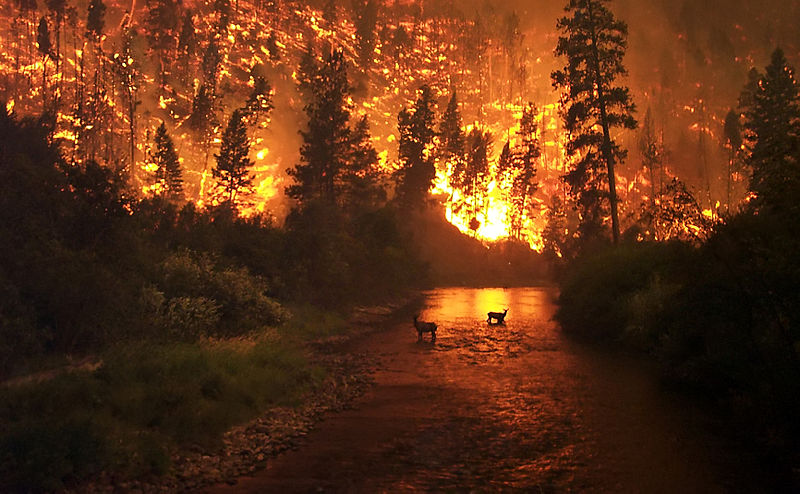It is no secret that this past summer was a hot one. Wildfires have been tearing through North America, especially in California and other western states.
Why, you may ask, has the number of fires increased? Is this something we should be worried about?
Although there are several factors that contribute to fires, climate change is surely one of them. According to an article written by climate science analyst Zeke Hausfather, there is no question that climate change has increased the occurrence of wildfires.
Fires have been cropping up for a long time, but the increase in heat and dryness due to shifting temperatures and changes in precipitation has created ideal conditions for more burning. Since the 1980s, almost double the amount of land is burning from fires, and those fires can (and have) spread more quickly and easily due to the drier conditions.
It is clear that wildfires can cause extreme damage; it’s hard not to be reminded of that from California’s most recent bout of fires. In addition to the physical damage from the fire itself, smoke can also cause health issues for those exposed.
Inhaling smoke can be detrimental to lung health, and fires can affect people up to thousands of miles away. Those who have asthma, children and the elderly are especially susceptible to contracting more serious health issues from breathing in smoke. Tiny pollution particles known as PM2.5 in the air flow into your body as you breathe in smoke and lodge themselves into your lungs, causing scarring and many additional problems.
Inhaling these small particles is no joke. The fires this past year caused many people to be at risk of these stresses, with little to do besides stay locked away inside their homes. In my home city of Seattle, the summer fires from British Columbia kept me stuck inside for weeks, staring only at the cloudy view out my window, which usually sports pristine mountain and lake views. I was devastated when I arrived home last summer only to be greeted by a smoky, hazy mess.
Washington has always been known for its beautiful mountains, water and outdoor activities. The past three summers though, these pristine views have been obscured by smoke, forcing me to limit time outside. I couldn’t do activities I look forward to every year like hiking and boating on the lake because of the fires that plagued the state. I felt helpless against this larger force and felt I could do nothing but sit inside defeated.
To make matters worse, although staying indoors helps when burning occurs nearby, the breathing in of toxins can’t be completely avoided as the particle-infused air surrounds us. Strategies such as wearing masks with filters when outdoors, drinking a lot of water or consuming supplements high in antioxidants can all help reduce damage from the fumes. My brother has asthma and was very concerned about his lungs throughout the smoky epidemic. Wearing a mask became the hottest new fashion trend, and stores all across the state were sold out.
Recently, as many of us experienced, smoke ravaged us here on Stanford’s campus. After enduring the fires at home in Seattle, I had no interest in inhaling weeks of thick, smoky, toxin-infused air. Again, I felt trapped indoors, forced to keep my windows shut and unable to spend time on the beautiful Stanford campus. Water polo practice was cut short, and we were unable to do much of what was planned, and I developed a cough in the span of the week.
Fires don’t affect us as individuals every day, but when they do, the results are no fun. The clear increase in burning that is occurring around the world has detrimental effects on both the land and on human health. This year has been an especially fiery one, and let’s hope it doesn’t get too much hotter!
Contact Hannah Schabb at hshabb ‘at’ stanford.edu.
